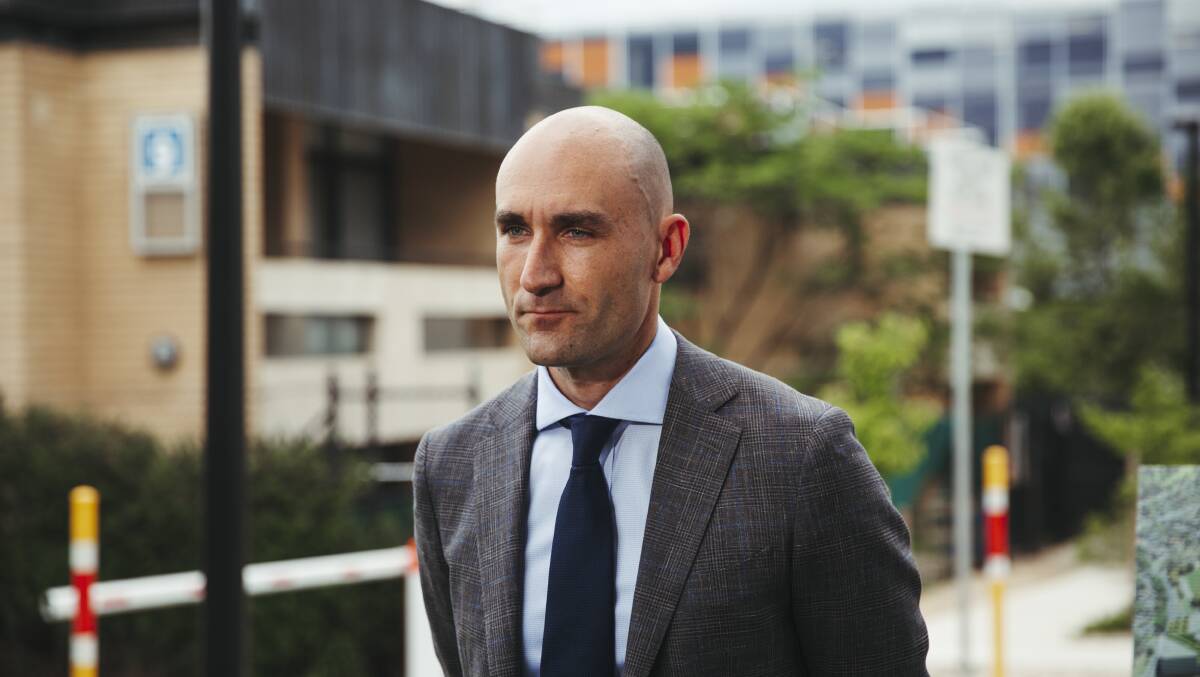
The number of COVID-19 patients in Canberra hospitals has nearly doubled over the past four days but modelling by the ACT's public health system suggests the territory has reached the peak of this Omicron wave.
There were 52 COVID-19 patients in Canberra hospitals on Monday, which was up from 27 patients last Friday.
But while there has been a surge in recent days, modelling from Canberra Health Services has indicated this number could fall to about an average of 40 patients this week.
Canberra Health Services chief executive Dave Peffer said internal modelling indicated the peak would be on January 17.
"This has been the first time for a little while that we haven't been predicting an increased acceleration in hospital admission," he said.
"And that's being driven by the caseload across the territory, or what we're estimating that caseload to be given the prevalence of the virus.
"And if you look internationally, the UK and South Africa, you've seen a very rapid acceleration [to the] peak and rapid deceleration in case numbers and so what we've experienced here locally is suggesting it's going to be consistent with that."
There are four people in intensive care and two are being ventilated. Mr Peffer said it was expected this number would remain steady.
The ACT reported a record 1601 COVID-19 cases on Monday. There was also one death after a woman in her 50s with COVID-19 died at Canberra Hospital.
The seven-day rolling average also hit a new high at 1282 cases. The seven-day rolling average has climbed dramatically since the start of the year.
The rolling average was 259 on January 1 but only one week later it reached 900 on January 8.
There were only nine COVID-19 patients in Canberra hospitals on January 1. This had increased to 24 patients by January 8.
The number of hospitalised patients remained relatively steady until Sunday when the number jumped to 41.
Modelling by Canberra Health Services only predicts the caseload and hospitalisation numbers three weeks in advance.
The modelling was thrown a curveball in recent weeks due to the surge in cases and the fact the true caseload was not identified due to test shortages.
But in recent days there has been a much greater understanding of the elements at play, Mr Peffer said.
"It's looking reasonable. A week ago we were still on a bit of a curve, we weren't sure whether hospitalisations would really accelerate quite quickly," he said.
"But they haven't done that as a couple of reasons for that vaccination being absolutely number one [and] high take up of booster shots.
"And what we can see looking at jurisdictions from around the country, with the exception of Tasmania... they've got a much higher rate of hospitalisations for head of population than the ACT."
Hospital stays are also much shorter for the Omicron variant. Mr Peffer said the average length-of-stay at the moment for COVID-19 was about two days.
"Certainly with Delta, the length of stay was around three times as long as what we're seeing with Omicron," he said.
Mr Peffer said the system was under pressure due to the high caseload and workforce availability.
"I do have to acknowledge the efforts of all the healthcare workers and support teams who are treating the patients, but also treating everyone else," he said.
"It is clear the system is under a lot of pressure. Some of that is being driven by the workload of the additional patients, but a lot of it is being driven by general workforce pressure.
"The option for our teams to be working remotely just simply isn't there... we know, with hundreds of our team members out at the moment, either in isolation or quarantine, that everyone else is picking up that load and they are carrying that load, because they know what that means for this community.
"In the last few years, we've asked a lot of this team, and they stood up and delivered it every time."
Federal Health Minister Greg Hunt said on Sunday there were signs that the outbreaks in the ACT and NSW were peaking.
"There are some clear signs that they may be peaking. I won't call it as having reached it yet," Mr Hunt said.
"What we've seen, is that all of these jurisdictions have so far significantly undershot the hospitalisation, ICU and ventilation predictions that were made at the outset."







